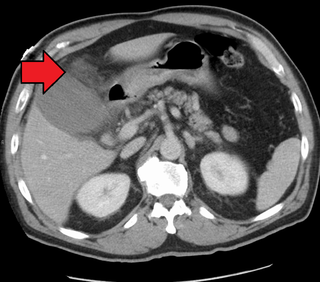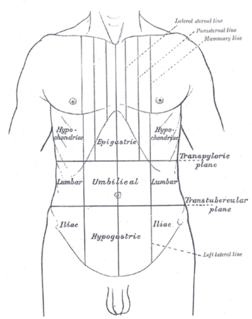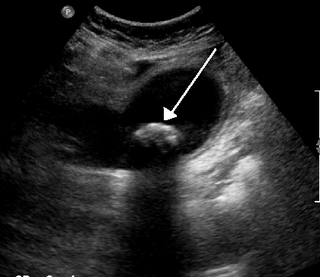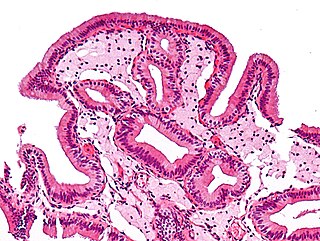Rigler's triad is a combination of findings on an abdominal radiograph of people with gallstone ileus, a condition where a large gallstone causes bowel obstruction. Rigler's triad consists of: (1) small bowel obstruction, (2) a gallstone outside the gallbladder, and (3) air in the bile ducts. [1] It bears the name of Leo George Rigler (1896–1979), who described it in 1941. [2] [3] It is not the same as Rigler's sign.

An abdominal x-ray is an x-ray of the abdomen. It is sometimes abbreviated to AXR, or KUB.
First described by Thomas Bartholin in 1654, gallstone ileus is a rare form of small bowel obstruction caused by an impaction of a gallstone within the lumen of the small intestine. Such a gallstone enters the bowel via a cholecysto-enteric fistula. The presence of large stones, >2.5 cm in diameter, within the gallbladder are thought to predispose to fistula formation by gradual erosion through the gallbladder fundus. Once a fistula has formed, a stone may travel from the gallbladder into the bowel and become lodged almost anywhere along the GI tract. Obstruction occurs most commonly at the near the distal ileum, within 60 cm proximally to the ileocecal valve. Rarely, gallstone ileus may recur if the underlying fistula is not treated.

Bowel obstruction, also known as intestinal obstruction, is a mechanical or functional obstruction of the intestines which prevents the normal movement of the products of digestion. Either the small bowel or large bowel may be affected. Signs and symptoms include abdominal pain, vomiting, bloating and not passing gas. Mechanical obstruction is the cause of about 5 to 15% of cases of severe abdominal pain of sudden onset requiring admission to hospital.
It is most commonly seen in 6th to 7th decade of life and affects females more often. Most patients with gallstone ileus are asymptomatic. Due to the fistula formation between the small intestine and gallbladder, large stones can lodge in the small bowel, leading to its obstruction. Pneumobilia means air in the biliary tract. It is due to the transfer of air from bowel through the fistula into the biliary tract.[ citation needed ]

In medicine, a disease is considered asymptomatic if a patient is a carrier for a disease or infection but experiences no symptoms. A condition might be asymptomatic if it fails to show the noticeable symptoms with which it is usually associated. Asymptomatic infections are also called subclinical infections. Other diseases might be considered subclinical if they present some but not all of the symptoms required for a clinical diagnosis. The term clinically silent is also used.
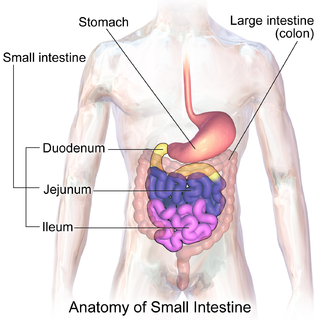
The small intestine or small bowel is the part of the gastrointestinal tract between the stomach and the large intestine, and is where most of the end absorption of food takes place. The small intestine has three distinct regions – the duodenum, jejunum, and ileum. The duodenum is the shortest part of the small intestine and is where preparation for absorption begins. It also receives bile and pancreatic juice through the pancreatic duct, controlled by the sphincter of Oddi. The primary function of the small intestine is the absorption of nutrients and minerals from food, using small finger-like protrusions called villi.
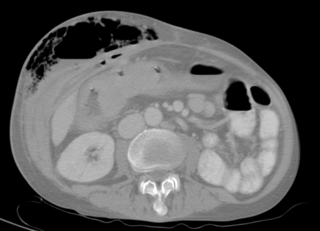
A fistula is an abnormal connection between two hollow spaces, such as blood vessels, intestines, or other hollow organs. Fistulas are usually caused by injury or surgery, but they can also result from an infection or inflammation. Fistulas are generally a disease condition, but they may be surgically created for therapeutic reasons.

